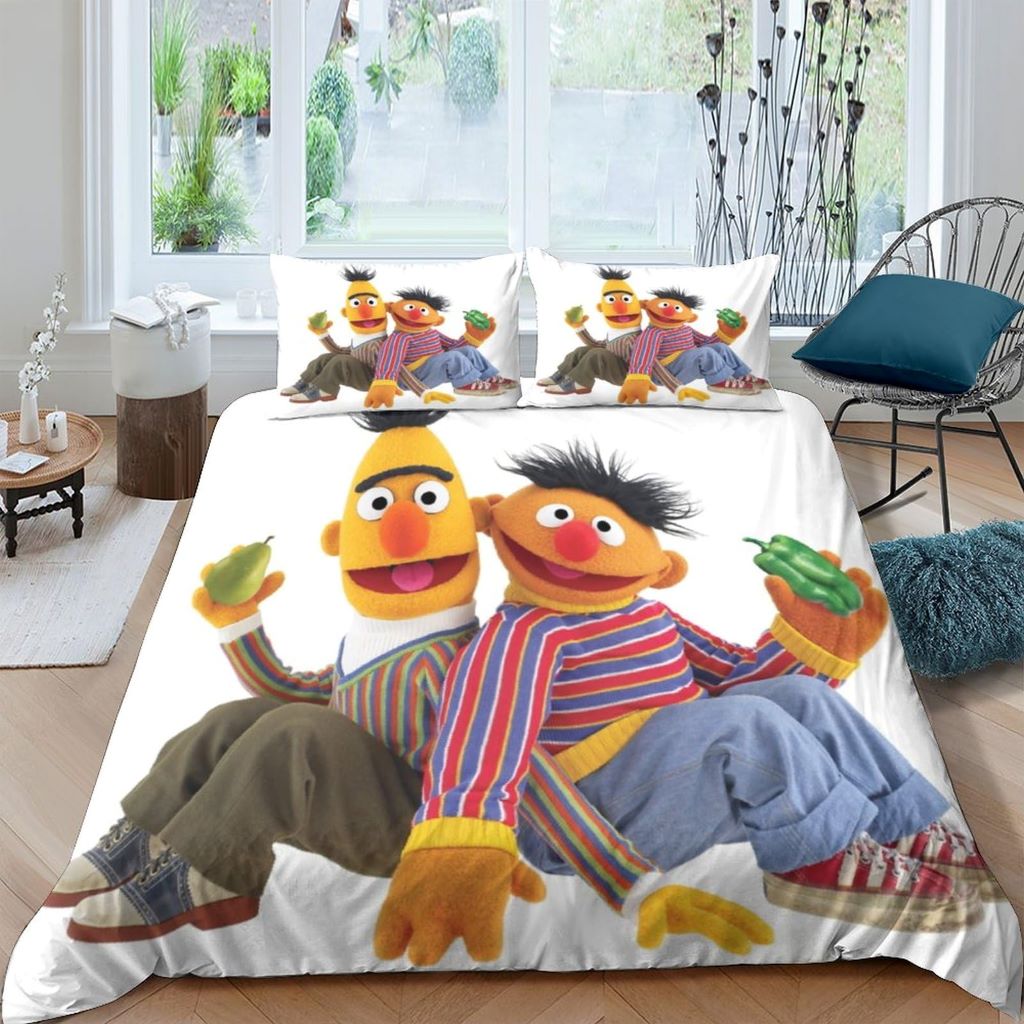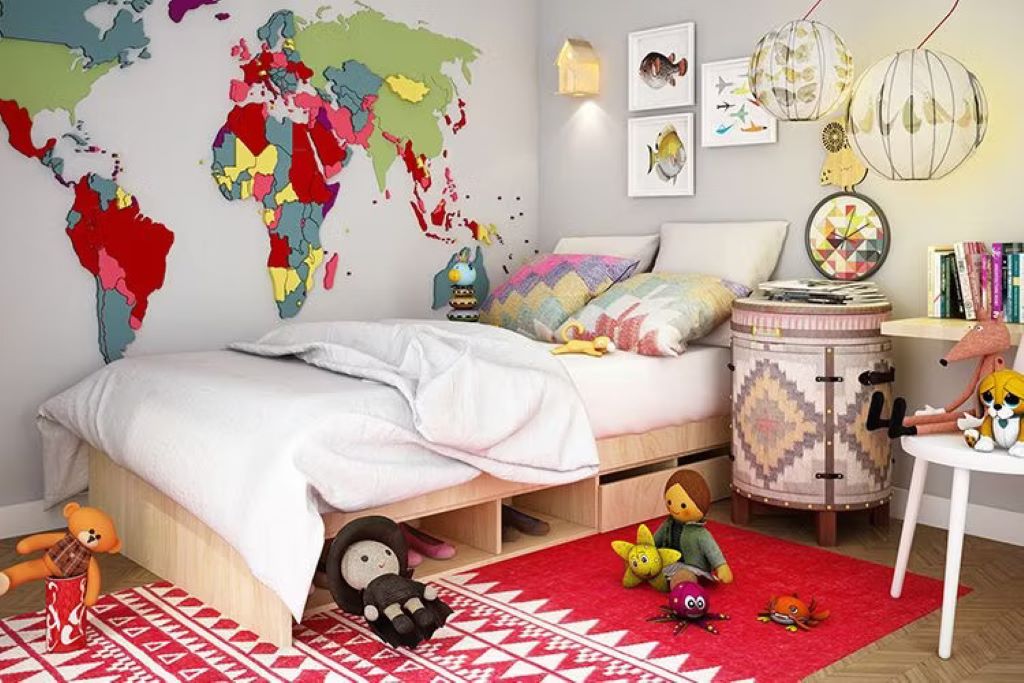
We all know how important a good night’s sleep is for your child’s growth and development. And one crucial factor in ensuring they get that restful slumber is choosing the right bedding for their room. It might seem like a simple task, but there’s more to it than meets the eye. In this guide, we’ll take you on a journey through the world of kids’ bedding, helping you make informed decisions that will keep your little ones cozy, comfortable, and excited to hop into bed every night. We’ll explore various aspects of bedding, from materials and designs to safety considerations and even the importance of involving your child in the decision-making process. So, let’s dive in and uncover the secrets to choosing the best kids bedding!
Materials Matter: Snuggle Up in Comfort
First things first, let’s talk about the materials used in kids’ bedding. Just like us adults, children need bedding that feels comfortable and inviting. When it comes to materials, there are a few options to consider:
Cotton: This is a crowd-pleaser. Cotton bedding is soft, breathable, and easy to care for. It’s perfect for most seasons and won’t make your child feel too hot or too cold during the night. Look for high-quality cotton with a high thread count for durability and extra softness.
Flannel: For those chilly winter nights, flannel is a fantastic choice. It’s warm, cozy, and oh-so-soft. Your child will feel like they’re wrapped in a warm hug when snuggled up in flannel sheets.
Microfiber: This synthetic material is known for its durability and affordability. Microfiber bedding is soft and easy to clean, making it a practical choice for kids.
Organic Options: If you’re concerned about chemicals or allergies, consider organic cotton or bamboo bedding. These materials are hypoallergenic and free from harmful chemicals, providing a safe and comfortable sleep environment for your child.

Designs and Patterns: Let Their Imagination Soar
Bedding is more than just sheets and pillowcases; it’s a chance to add a touch of personality to your child’s room. Let their imagination run wild by involving them in choosing the designs and patterns for their bedding.
Ask your child about their favorite colors, characters, or themes. Whether they’re into superheroes, animals, princesses, or outer space, you can find bedding sets that cater to their interests. The key is to create a space that feels like their own, sparking their creativity and making bedtime something to look forward to.
Remember, kids’ tastes can change rapidly, so opt for bedding with designs that can easily be swapped out or mixed and matched as their preferences evolve.
Bedding Sets vs. Mix and Match: Finding the Right Balance
When it comes to bedding, you have two main options: buying a complete bedding set or mixing and matching individual pieces. Both have their merits, and the choice ultimately depends on your child’s preferences and your budget.
Bedding Sets: These are convenient and often come with everything you need – fitted and flat sheets, pillowcases, and sometimes a comforter or duvet. They’re typically coordinated in terms of design and color, making it easy to create a cohesive look in your child’s room.
Mix and Match: This approach allows for more customization. You can select individual pieces to create a unique combination of colors and patterns. It’s a great way to add a personal touch to your child’s space and adapt to changing tastes over time.
Consider your child’s input when making this decision. Some kids love the idea of having a complete matching set, while others enjoy the creative freedom of mixing and matching.
Safety First: Keep Bedding Age-Appropriate
Safety should always be a top priority when choosing kids’ bedding. Here are a few safety considerations to keep in mind:
Avoid Loose Bedding: For infants and toddlers, it’s essential to keep the crib free of loose bedding, including pillows, quilts, and bumper pads. The safest bedding for babies is a fitted crib sheet, which should fit snugly over the mattress.
Aim for Breathability: Choose bedding materials that allow for good air circulation. This helps reduce the risk of overheating, especially for infants. Avoid heavy blankets or comforters in the crib.
Check for Certifications: Look for bedding that meets safety standards and certifications, such as the Consumer Product Safety Commission (CPSC) guidelines. This ensures that the products you choose have undergone safety testing.
Consider Allergies: If your child has allergies, opt for hypoallergenic bedding materials. This can help prevent allergic reactions and ensure a peaceful night’s sleep.
As your child grows, you can gradually introduce more bedding options, like pillows and blankets, but always prioritize safety.
Size Matters: Choosing the Right Fit
When selecting kids’ bedding, make sure it’s the right size for the bed. Bedding that’s too big or too small can be uncomfortable and affect the quality of your child’s sleep. Here’s what to keep in mind:
Fitted Sheets: Make sure the fitted sheet snugly fits the mattress with no excess fabric that could come loose during the night. This is essential for safety, especially in cribs and toddler beds.
Comforter or Duvet: Ensure that the comforter or duvet is the right size for the bed. It should drape over the sides and foot of the mattress without hanging too low, creating a neat and cozy appearance.
Pillowcases: Pillowcases should fit the pillows snugly, so they don’t slip off during the night. Standard pillowcases usually work for most kids’ pillows.
Easy Care: Because Life Gets Messy
Kids are notorious for making messes, whether it’s spills, accidents, or creative art projects in bed. That’s why it’s essential to choose bedding that’s easy to clean and maintain. Look for these features:
Machine Washable: Opt for bedding that can be tossed in the washing machine and easily cleaned. This will save you time and stress when accidents happen.
Stain-Resistant: Some bedding materials come with stain-resistant properties, which can be a lifesaver for busy parents.
Durable: Kids can be tough on their bedding. Invest in durable materials that can withstand the wear and tear of everyday use.
Colorfastness: Ensure that the colors of the bedding won’t fade quickly after multiple washes. This will keep the bedding looking vibrant and fresh.

Let Your Child’s Personality Shine
Bedding is not just about comfort and practicality; it’s also a form of self-expression for your child. Encourage them to be part of the decision-making process. Ask questions like:
- “What colors do you like for your bedding?”
- “Do you want a pattern with your favorite animals?”
- “Would you like a themed bedding set?”
Involving your child in these choices not only empowers them but also helps create a sense of ownership and pride in their space. Plus, it’s a fun bonding activity that allows you to learn more about their preferences.
Think of it as decorating their own little kingdom where they’re the rulers, and bedtime becomes an adventure!
Keep Up with Their Growth
Kids grow fast, and their bedding needs can change just as quickly. It’s a good idea to periodically assess whether their bedding still meets their needs and preferences. This includes checking if the mattress size is still appropriate, the bedding style still suits their tastes, and if the materials are still comfortable.
As they transition from a crib to a toddler bed and eventually to a twin or full-size bed, you’ll need to adjust the bedding accordingly. Keeping up with their growth ensures that they continue to have a comfortable and inviting sleep environment.
FAQs
Q1: When should I transition my child from a crib to a toddler bed, and what bedding should I use?
A1: Transition your child to a toddler bed when they start showing signs of climbing out of the crib or seem uncomfortable in it. Use a fitted crib sheet for safety in the crib. Once in a toddler bed, you can use toddler-sized bedding sets.
Q2: How often should I wash my child’s bedding?
A2: Ideally, wash your child’s bedding once a week, or more frequently if accidents or spills occur. Regular washing helps maintain a clean and hygienic sleep environment.
Q3: Are character-themed bedding sets a good choice for kids?
A3: Character-themed bedding sets can be a great choice if your child loves a particular character or theme. However, keep in mind that their preferences may change quickly, so consider bedding that allows for easy updates.
Q4: What’s the best way to involve my child in choosing their bedding?
A4: Involve your child by asking about their favorite colors, characters, or themes. Show them a few options and let them make the final choice. This empowers them and makes their room feel like their own special place.
Q5: Can I use regular adult-sized bedding for my child’s bed?
A5: While you can use adult-sized bedding for your child, it may not fit properly and could be less comfortable. It’s best to choose bedding that’s appropriately sized for your child’s bed to ensure a snug and safe fit.
In conclusion
Selecting the best kids’ bedding is a delightful journey that involves comfort, creativity, safety, and your child’s personal preferences. Why Are Playgrounds Important? Just as by considering materials, designs, safety, size, and your child’s involvement, you can create a cozy and inviting sleep space that your little one will cherish, playgrounds offer a space where children can explore, learn, and have fun, fostering their physical and social development. Sweet dreams await their active and imaginative minds!

